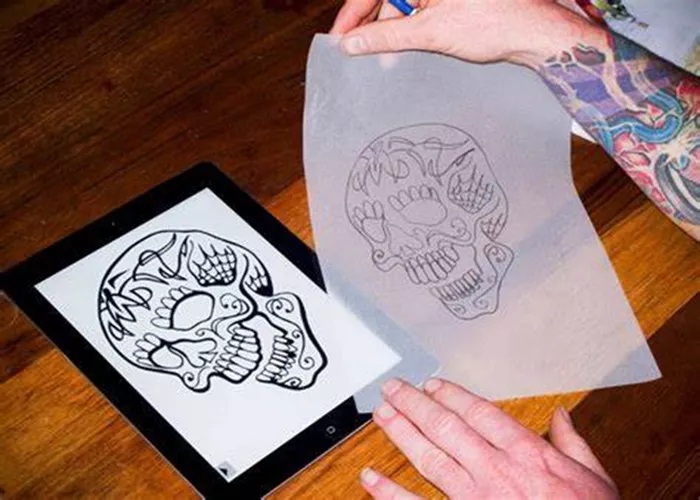Creating tattoos on paper is an essential skill for aspiring tattoo artists and enthusiasts alike. This extensive guide will walk you through the techniques, tools, and creative processes involved in drawing tattoos, ensuring that you can translate your ideas into stunning designs.
1. Understanding Tattoo Art
1.1 The History of Tattoo Art
Tattooing has a rich history that spans cultures and centuries. This section explores the origins of tattoo art, its cultural significance, and its evolution into the modern art form we know today.
1.2 The Different Styles of Tattoos
Tattoo art is diverse, with various styles such as traditional, realism, tribal, and more. Here, we outline the key characteristics of each style and how they can influence your drawing techniques.
1.3 The Importance of Design in Tattooing
Design is crucial in tattooing, as it not only reflects personal expression but also needs to work well on skin. This part discusses the principles of good tattoo design and what to consider when drawing.
2. Essential Tools for Drawing Tattoos
2.1 Choosing the Right Paper
Not all paper is created equal. This section covers the different types of paper best suited for tattoo drawing, including texture, weight, and finish.
2.2 The Best Pencils and Pens for Tattoo Sketching
Selecting the right drawing tools can enhance your creative process. Here, we discuss various pencils, pens, and markers ideal for tattoo sketches and the effects they create.
2.3 Other Useful Drawing Tools
In addition to paper and pens, there are other tools that can aid your drawing process. This section highlights erasers, rulers, compasses, and digital tools that can assist in creating tattoo designs.
3. Techniques for Drawing Tattoos
3.1 Basic Drawing Techniques
Before diving into tattoo-specific techniques, mastering basic drawing skills is essential. This section reviews foundational drawing techniques that are applicable to tattoo art.
3.2 Sketching Out Ideas
Starting with rough sketches can help visualize your ideas. Here, we discuss how to brainstorm and sketch concepts before refining them into final designs.
3.3 Developing Line Work
Line work is a crucial aspect of tattoo art. This part covers techniques for creating clean, bold lines that will translate well to tattooing.
3.4 Shading and Texture Techniques
Shading adds depth and dimension to your designs. This section explores various shading techniques that can enhance your tattoo drawings.
3.5 Incorporating Color
Color can dramatically alter the impact of a tattoo. Here, we discuss how to effectively incorporate color into your designs, including color theory and application techniques.
See also: Illustration Style Tattoos: A Detailed Exploration of Artistic
4. Drawing Popular Tattoo Motifs
4.1 Floral Tattoos
Floral designs are a staple in tattoo art. This section offers step-by-step instructions on how to draw various flowers and integrate them into tattoo designs.
4.2 Animal Tattoos
Animal motifs carry rich symbolism. This part discusses how to draw popular animals, focusing on their unique features and how to represent their spirit in tattoo form.
4.3 Geometric and Abstract Designs
Geometric tattoos are increasingly popular. This section explores how to create intricate geometric patterns and abstract designs that can be used in tattoos.
4.4 Script and Typography Tattoos
Words and phrases can carry significant meaning. Here, we provide techniques for designing beautiful script and typography tattoos.
5. Creating Custom Tattoo Designs
5.1 Finding Inspiration
Inspiration can come from various sources. This section discusses where to look for ideas and how to cultivate your creative vision.
5.2 Combining Elements for Unique Designs
Creating custom tattoos often involves combining different elements. Here, we explore techniques for merging motifs and styles to create original designs.
5.3 Using Reference Images
Reference images can be invaluable in the drawing process. This part discusses how to effectively use references while maintaining originality.
6. The Digital Approach to Tattoo Drawing
6.1 Digital Drawing Tools and Software
Digital tools have revolutionized tattoo design. This section covers popular software and hardware options for digital tattoo drawing.
6.2 Transitioning from Paper to Digital
For those accustomed to traditional drawing, transitioning to digital can be challenging. Here, we discuss tips and techniques for making the switch smoothly.
6.3 Benefits of Digital Tattoo Design
Digital tattoo design offers numerous advantages, from easy edits to color experimentation. This part explores the benefits of working digitally.
7. Presenting Your Tattoo Designs
7.1 Creating a Portfolio
A strong portfolio is essential for aspiring tattoo artists. This section covers how to compile and present your tattoo designs effectively.
7.2 Sharing Your Work on Social Media
Social media is a powerful tool for artists. Here, we discuss best practices for sharing your tattoo designs online and building an audience.
7.3 Networking with Other Artists
Connecting with other tattoo artists can provide valuable insights. This part highlights the importance of networking and how to do it effectively.
8. Understanding Client Needs
8.1 Communicating with Clients
Effective communication is key to understanding client preferences. This section explores how to ask the right questions to gather information for designs.
8.2 Incorporating Client Feedback
Client feedback can enhance your designs. Here, we discuss how to integrate suggestions while maintaining your artistic integrity.
8.3 Finalizing Designs for Tattooing
Once a design is approved, it’s time to finalize it for tattooing. This part outlines the steps to prepare your drawings for a tattoo artist.
9. Conclusion: The Journey of Tattoo Drawing
Drawing tattoos on paper is a skill that combines creativity, technique, and personal expression. This guide serves as a comprehensive resource for those looking to master the art of tattoo drawing. By understanding the history, techniques, and tools involved, artists can create designs that resonate deeply with individuals and capture the essence of tattoo art. Whether you’re an aspiring tattoo artist or simply looking to express your creativity, the journey of drawing tattoos can be both fulfilling and inspiring.
You Might Be Interested In
Flash Design Tattoos: A Comprehensive Guide to Instant Ink
Inked Relief: Understanding Tattoos that Represent Anxiety
Mandala Tattoos: Symbolism, Designs, and Cultural Significance

